Pavilion Tokyo 2021: A Glimpse of the Changing Metropolitan Cityscape
A New Story Of City Life In Tokyo
These nine outdoor works of art and architecture paint a new picture of Tokyo’s progressive urban evolution.
If you happen to walk around the neighborhoods of Kudanshita, Omotesando, Shibuya, Shimbashi, Shinagawa and Yoyogi these days you may catch glimpses of a giant green teahouse, blue castle, floating clouds and other artistic structures dotting the landscape.
Ongoing until Sept. 5, 2021, these installations, designed by six Japanese architects and three artists, are exhibits of Pavilion Tokyo 2021. Planned by the Watari-um Museum of Contemporary Art, the project was organized by the Tokyo Metropolitan Government, Arts Council Tokyo (Tokyo Metropolitan Foundation for History and Culture) and the executive committee of Pavilion Tokyo 2021 and is part of Tokyo Tokyo Festival Special 13.
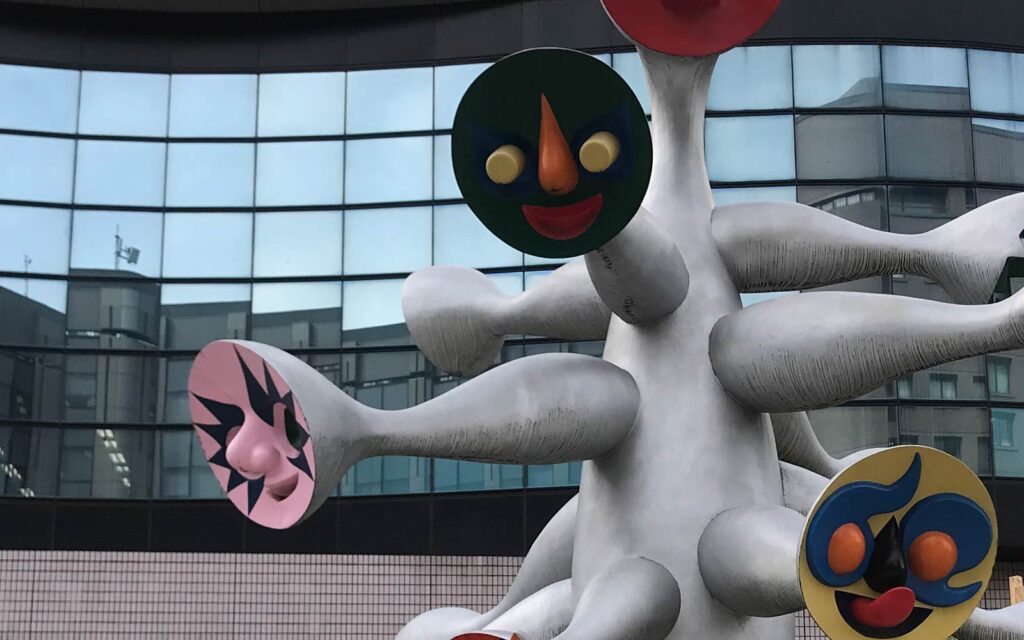 © Photo by Alma Reyes
© Photo by Alma Reyes
Its concept was originally to provide foreign visitors of the 2020 Tokyo Olympics a cultural guide to Tokyo’s cityscape. Now, with the restrictions imposed on public viewing of the 2020 Tokyo Olympic and Paralympic Games as well as foreign travelers entering the country, the idea has taken on a quite different perspective.
Locals, however, can still enjoy the creative art and appreciate its representation of the dynamic changes that have happened in Tokyo’s urban landscape. The nine structures hope to tell a new story of city life in Tokyo—and to fill some empty and uncertain holes during the current coronavirus pandemic.
Tea House Go-an
In the Yoyogi area, architect Terunobu Fujimori’s Tea House Go-an sits in front of Victor Studio, at the corner by the New National Stadium.
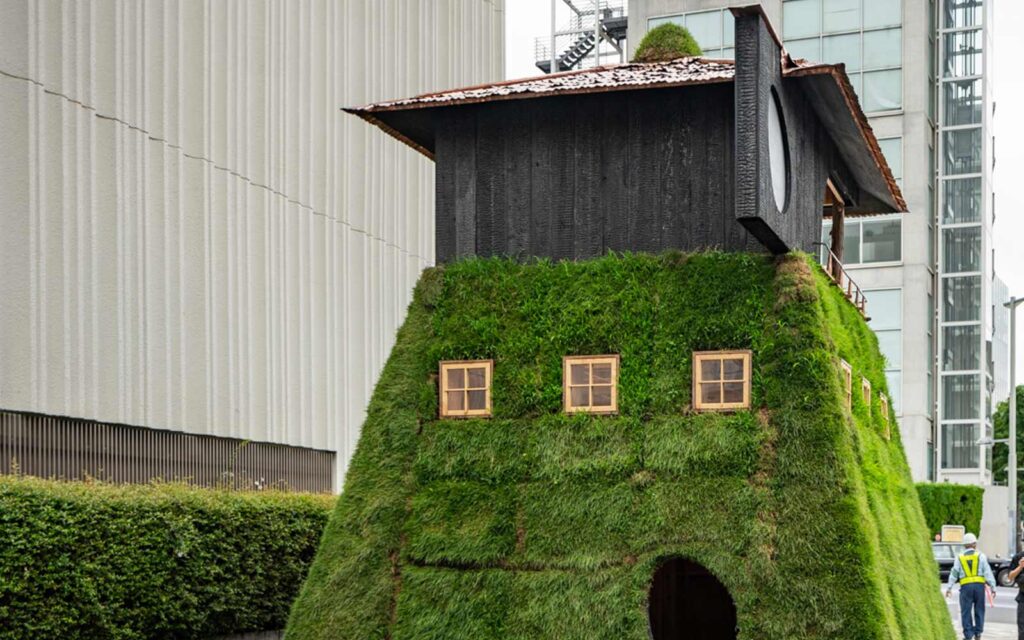 © Photo by ToLoLo studio
© Photo by ToLoLo studio
Fujimori is also an author, cultural commentator, TV host and represented Japan in the 2006 Venice Biennale. He wanted to project a “freestyle” teahouse that emphasizes height and hospitality, which would allow passersby to peep through the interior from the large window.
The Go-an is built from solid timber clad in charred cedar and sits on a grass-covered mound. The use of charcoal and soil as fundamental materials accentuates Fujimori’s philosophy that all organic matter returns to charcoal and all inorganic matter returns to the soil.
To enter the teahouse, visitors need to climb through a hole on the grass-filled facade, then ascend a ladder to the top floor where a panoramic view of the New National Stadium awaits them. The tea ceremony room features a washi (Japanese paper) lantern and a ryurei (Japanese tea ceremony) styled tea table with chairs to sit on. The night scenery appears quite surreal when the lights inside are lit, and the teahouse glitters like a lantern. Reservations are required for entry.
Access: Sendagaya, Kokuritsu-Kyogijo and Kita-sando stations.
Cloud pavilion
While in the vicinity of the New National Stadium, you can take a stroll around Panorama Square in Yoyogi Park and find architect Sou Fujimoto’s Cloud pavilion.
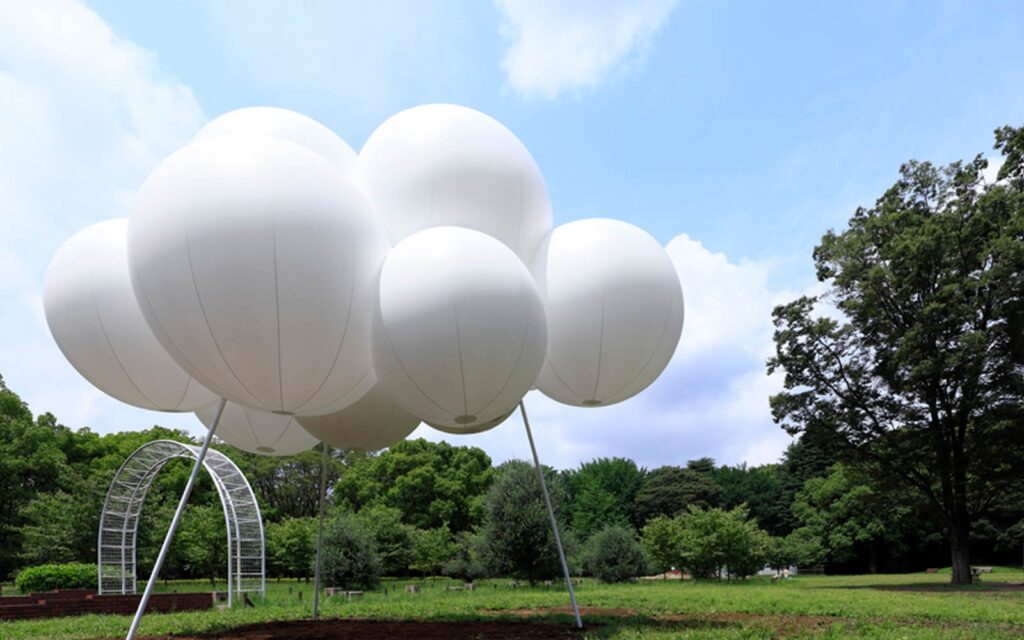 © Photo by Keizo Kioku
© Photo by Keizo Kioku
This is a structure of white, fluffy floating clouds that appear like molecules, and stand on three gray poles. Fujimoto wishes to express a three-dimensional field with no walls, but an existing inner space. The enormity of the clouds serves as a “big roof of the world,” enveloping a wide range of areas and providing shade to viewers at the same time.
Fujimoto is known for his light structures and permeable enclosures and was selected to design the Serpentine Gallery pavilion in London in 2013. The other floating Cloud pavilion is located at Takanawa Gateway station in Minato-ku. Permission is required to take photos for publication purposes.
Access: Harajuku, Meiji-jingumae and Takanawa Gateway stations.
Global Bowl
In Omotesando, you can find the huge Global Bowl in front of the United Nations University.
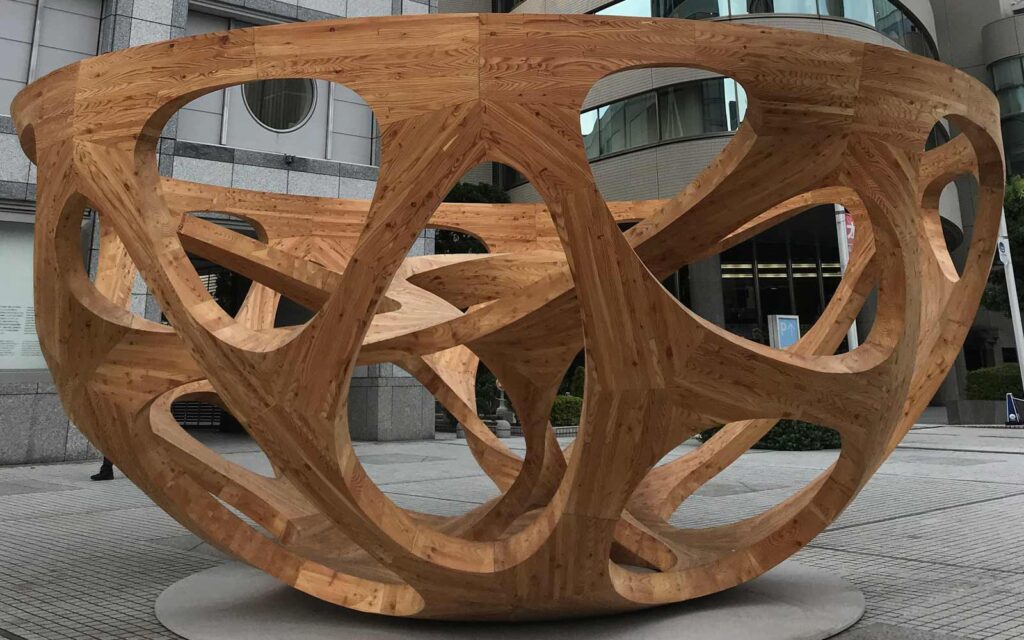 © Photo by Alma Reyes
© Photo by Alma Reyes
Designed by architect Akihisa Hirata, it is made from traditional wood but cut by a computer-controlled machine. Hirata himself chose the location of the university that caters to an international community and the busy intersection that invites people to gather around the structure.
The design of the holes in inverted geometrical patterns symbolizes transparency between external and internal boundaries. It suggests an undefined and limitless tangling space where people can move around freely.
Hirata hails from a new generation of architects that explores the relationship between structure and ecology.
Access: Omotesando and Shibuya stations.
Street Garden Theater
Just a few minutes walk from the Global Bowl in front of the former National Children’s Castle is the “Street Garden Theater” created by architect Teppei Fujiwara.
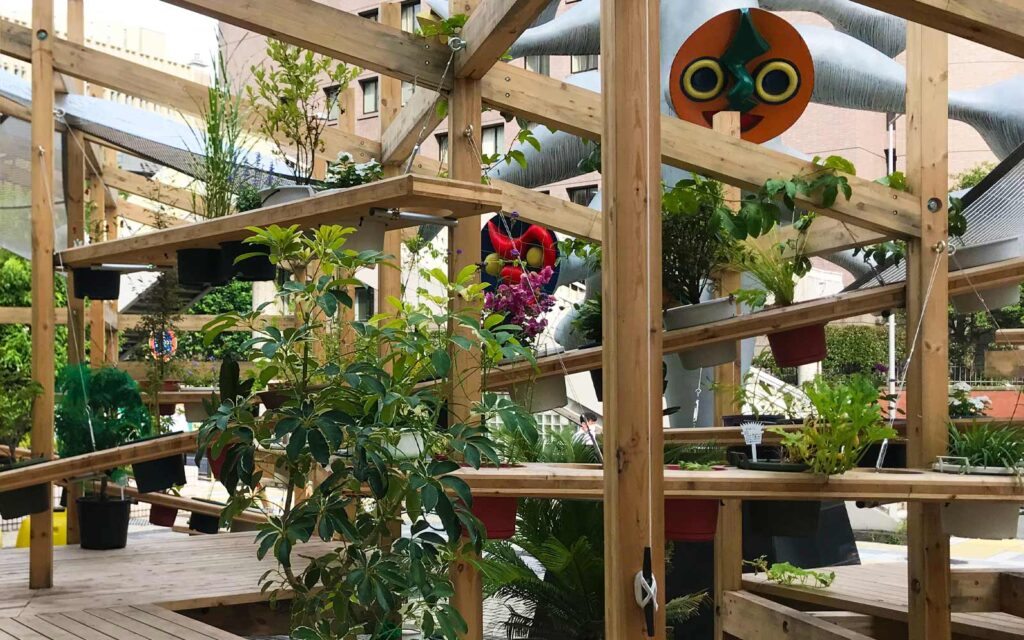 © Photo by Alma Reyes
© Photo by Alma Reyes
With the coronavirus outbreak constricting people’s movement for over a year, Fujiwara’s team focused more intently on the relationship of plants, architecture and space. The result is an open beam theater-like structure filled with approximately 300 flowerpots and planted vegetables and weeds hanging from ledges and wooden floorboards. People can also go up the planks and stroll or sit around the installation. Fujiwara was inspired by the Edo period when daimyo (fuedal lords) built their mansions on high ground and landscaped with gardens to express Edo’s rich and refined culture. Having worked previously with Kengo Kuma, Fujiwara also contributes to the worlds of contemporary art, sculpture, performing arts, urban planning and education.
Access: Omotesando and Shibuya stations.
Tokyo Castle
Along the promenade of Meiji Jingu Gaien Park, you may spot two traditional-looking Japanese castles: one made from cardboard and the other from blue tarpaulin sheets. These intriguing structures, designed by artist Makoto Aida, capture the image of shelters or tents made by homeless people to suggest the impermanence and fragility of humans, especially during a harrowing crisis.
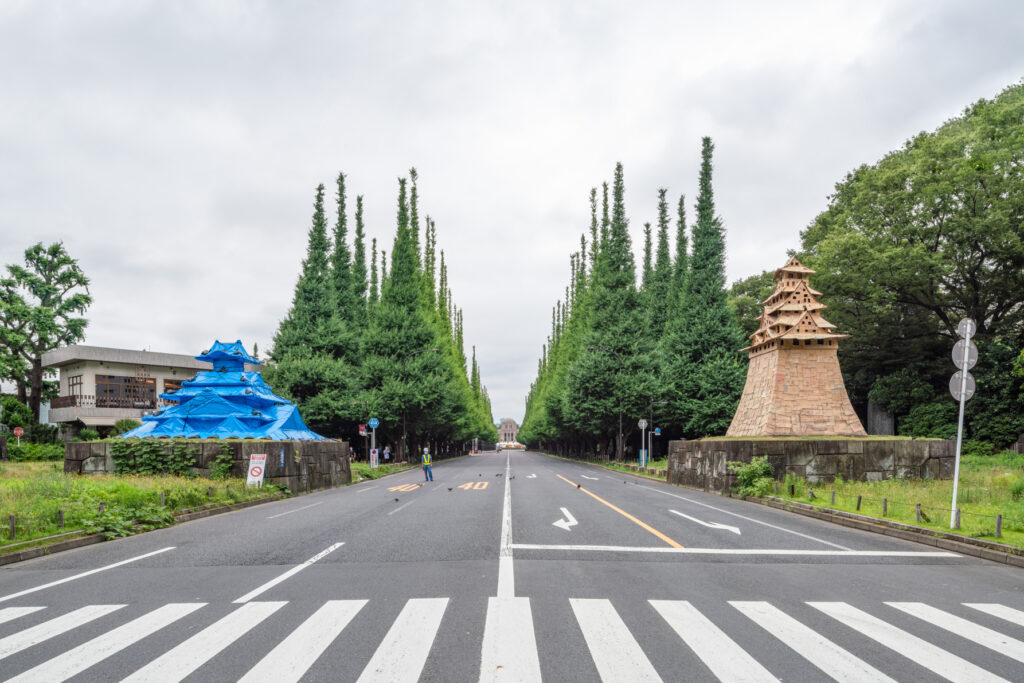 © Photo by ToLoLo studio
© Photo by ToLoLo studio
Both castles use low-cost but durable materials that are often used in temporary structures and which have protected people from severe rains and winds. They hope to impart a message of provisional existence—something that may collapse, yet struggles to survive. Aida produces provocative works of manga, painting, video, photography, sculpture and installations.
Access: Aoyama Itchome and Gaienmae stations.
2020-2021
Outside the Watari-um Museum of Contemporary Art in Gaienmae, Daito Manabe and Motoi Ishibashi (of Rhizomatiks) have created an AI light installation.
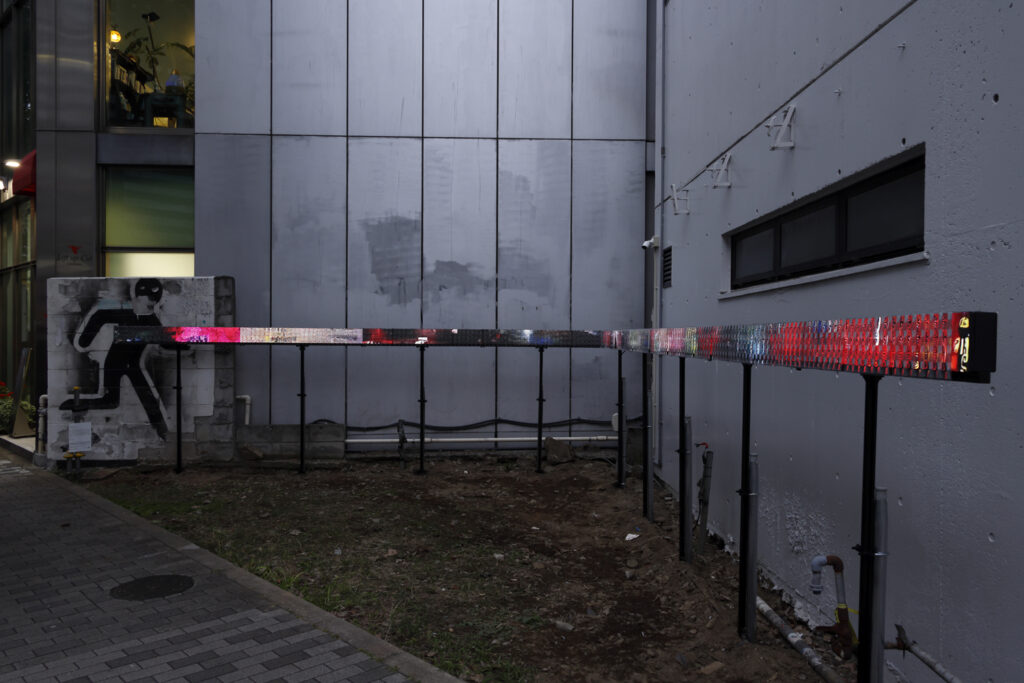 © Photo by Keizo Kioku
© Photo by Keizo Kioku
The installation reveals data, texts and images showing significant events in the country since the arrival of the coronavirus in 2020. Rhizomatiks works typically focus on experimental projects involving the relationship of humans and technology. Entrance fee and reservations are required.
Access: Omotesando and Gaienmae stations.
The Obliteration Room
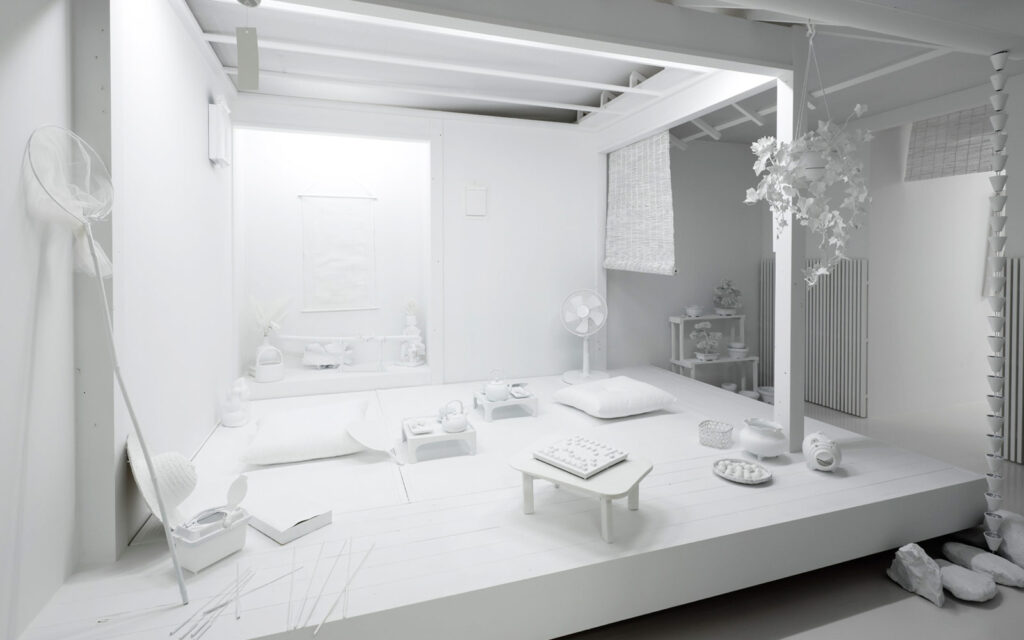 © Photo by Keizo Kioku
© Photo by Keizo Kioku©Yayoi Kusama, “The Obliteration Room.” Collaboration between Yayoi Kusama and Queensland Art Gallery. Gift of the artist through the Queensland Art Gallery Foundation 2012. Collection: Queensland Art Gallery, Australia. Photo: Keizo Kioku
Undoubtedly one of the most celebrated artists in Japan today, Yayoi Kusama showcases her “Obliteration Room” at the Shibuya ward office.
This is a life-sized model of a purely white apartment furnished with household items, such as appliances, TVs and furniture like a sofa and dining table. There is also a post box and a bicycle at the entrance of the kitchen. One of the impressive features is a Japanese tatami mat room with tea trays, teapots and dango (sweet dumplings), complemented by the tokonoma (alcove), complete with a hanging scroll and flowers. To “obliterate” this scenery, visitors cover the areas with colored stickers, eventually converting the immaculate space into an explosive spectrum. Reservations required.
Access: Shibuya station,
Suimei
Located within the Hama-rikyu Gardens in Shimbashi, “Suimei” by architect Kazuyo Sejima is a winding stream curving through the city greenscape, created from mirrored surfaces.
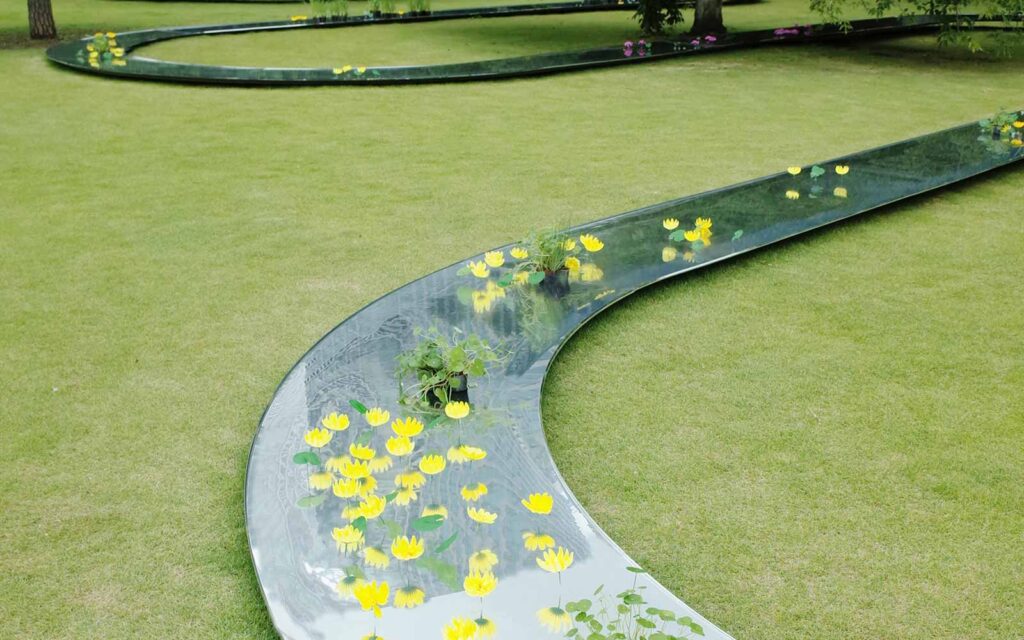 © Photo by Kazuyo Sejima & Associates
© Photo by Kazuyo Sejima & Associates
Sejima was inspired by the waterways of Heian gardens and wanted to construct a suimei (light shimmering on water) effect on the man made stream. The bright reflection of the sky and Shiodome’s skyscrapers bounce beautifully on the quiet, flowing water and traditional garden, conveying the connection between the past, present and future. Sejima was both the first female and first Japanese director of the architecture section during the Venice Biennale in 2010. Entrance fees and reservations are required.
Access: Shiodome and Hamamatsucho stations.
Kokage-gumo
Architect Junya Ishigami chose the Kudan House, an old residence built-in 1927 in Kudanshita to build a wooden structure of burnt cedar he called “Kokage-gumo,” meaning “wooden clouds.”
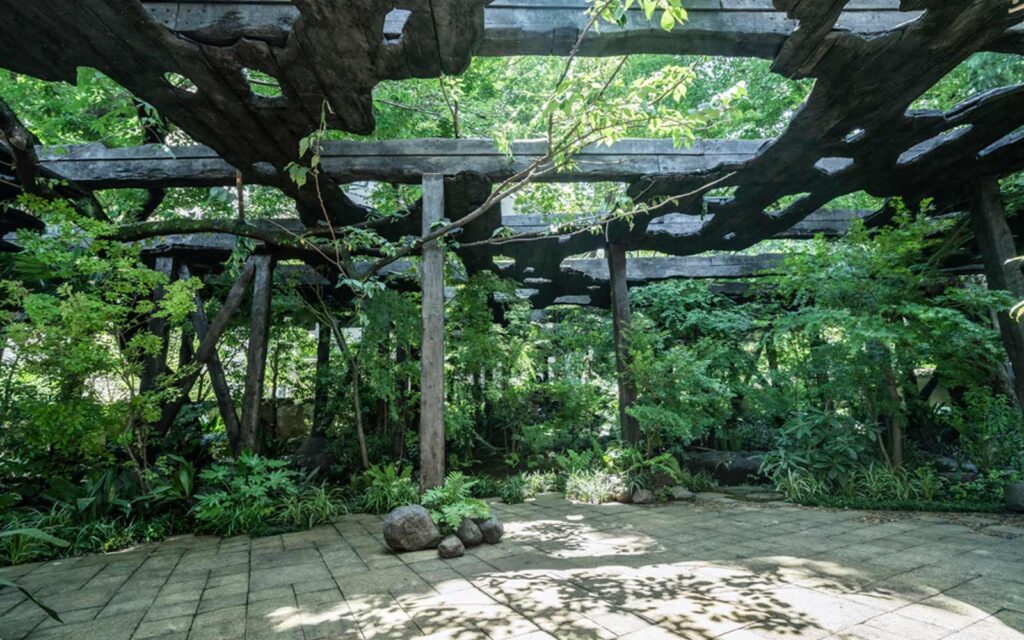 © Photo by Shuji Goto
© Photo by Shuji Goto
The cedar wood surface is carbonized, which creates cool shadows from the surrounding foliage and beams of light filtering through the structure’s holes. The effect produces a harmony between history and the ancient-looking wood, as though time had not slipped away. Ishigami has won several awards in architecture, including the Golden Lion for Best Project at the 12th Venice Architecture Biennale in 2010. Reservations are required.
Access: Kudanshita and Iidabashi stations.
Exploring art and architecture amid the elements of nature makes the Pavillion Tokyo 2021 visit a truly refreshing experience particularly during this constrained time of the pandemic.
The Deets
When: Now through Sept. 5, 2021
Where: Locations around Tokyo (see website)
Price: Online reservations and entrance fees are required for some of the pavilions. Please see website.
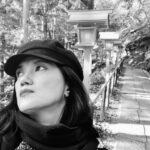











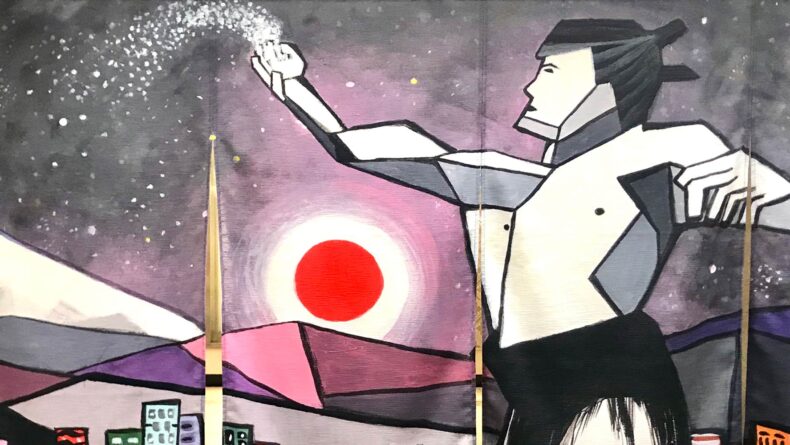

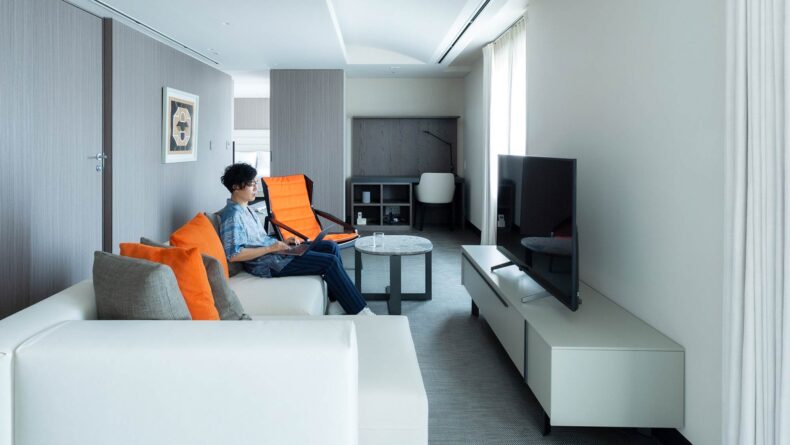
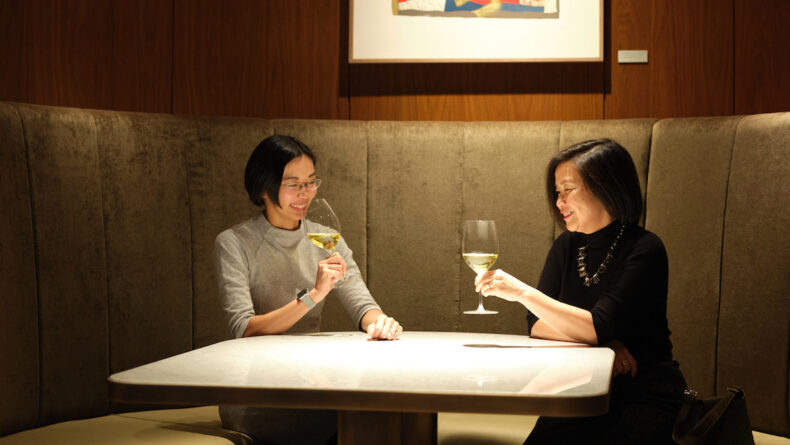
Leave a Reply